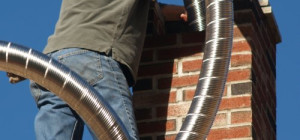Industrial rooftops pose various fall hazards, including access points like skylights. Working on a roof requires the right equipment to protect yourself.
When the erection of floor and roof members is being performed in locations where conventional protection systems are not feasible, controlled access zones should be established. A sample plan is provided below.
Guardrails
Guardrails are stationary safety systems that can prevent falls from the leading edge of a roof or roof openings such as skylights. These can be used with other protection systems, such as a harness, safety net, or safety monitoring system.
These barriers consist of top rails, mid rails, and posts assembled to stop employee falls and toe-boards that prevent equipment and materials from falling off the edge. They are governed by laws regulating their material, load specifications, and height requirements.
The most common guardrail is the W-beam system, which features a corrugated two-wave cross-section. This design can be constructed of either 10 or 12-gauge galvanized steel for longevity. Some bars are designed with a three-wave cross-section for increased strength in high-risk areas.
Nets
Safety nets are a great way to reduce risk and provide workers with the necessary protection. However, these systems can sometimes take time due to height constraints or limited access points. Nonetheless, there are many ways to ensure that nets function correctly and integrate with other safety measures.
Construction safety nets are created to protect people from falling items or themselves on the building site. They are crafted in a mesh-like design from resilient synthetic fibers that have high tensile strength and resistance to impact pressures. These nets are often used on scaffolding, rooftops, and open floors to create a barrier that prevents falls. A netting inspection should be conducted before use and regularly after that to check for UV degradation or other defects.
Harnesses
While many workplace safety systems have evolved, roof fall protection system remains a serious concern for industrial construction workers. Thankfully, modern materials and technology have vastly improved personal fall protection equipment.
Harnesses are an essential part of any roof safety system. They are designed to restrain the worker in a hazardous position or arrest falls. They are available in different classes with different configurations. Some harnesses have side D-rings for positioning work, and others are built with a dorsal D-ring that can be used to support the worker when leaning.
Lanyards connect the harness to the anchor points. They must be long enough to allow the worker to tie off in a safe position yet short enough to prevent the worker from being pulled into the roof’s edge.
Tie-off Anchors
Often, roof fall protection systems include a point of attachment for tying off lanyards or lifelines. These safety systems allow workers to connect for fall restraint and arrest. They are ideal for window washing, facade access, and building maintenance.
However, these roof safety systems require you to stay at least 6 feet from the edge of the structure. This is due to amplifying the horizontal component of maximum arrest force at cable attachment points.
Consider a mobile fall protection system if you need to work close to the edge of your roof. These are non-penetrating and can provide several connection points on a movable cart. These are great for flat roofs and curved surfaces.
Drones
When working on an industrial construction project, the #1 priority should be worker safety. You can help to accomplish this by utilizing advanced drone technology. Drones can help you conduct inspections faster and more safely than workers can do manually. They can even save you money in the long run by identifying issues before they become serious problems.
For example, a drone with thermal imaging can detect a natural gas leak underground or reveal roof conditions that would be hard to see on foot. This helps you comply with ANSI regulations and keep your employees safe while performing their duties.







